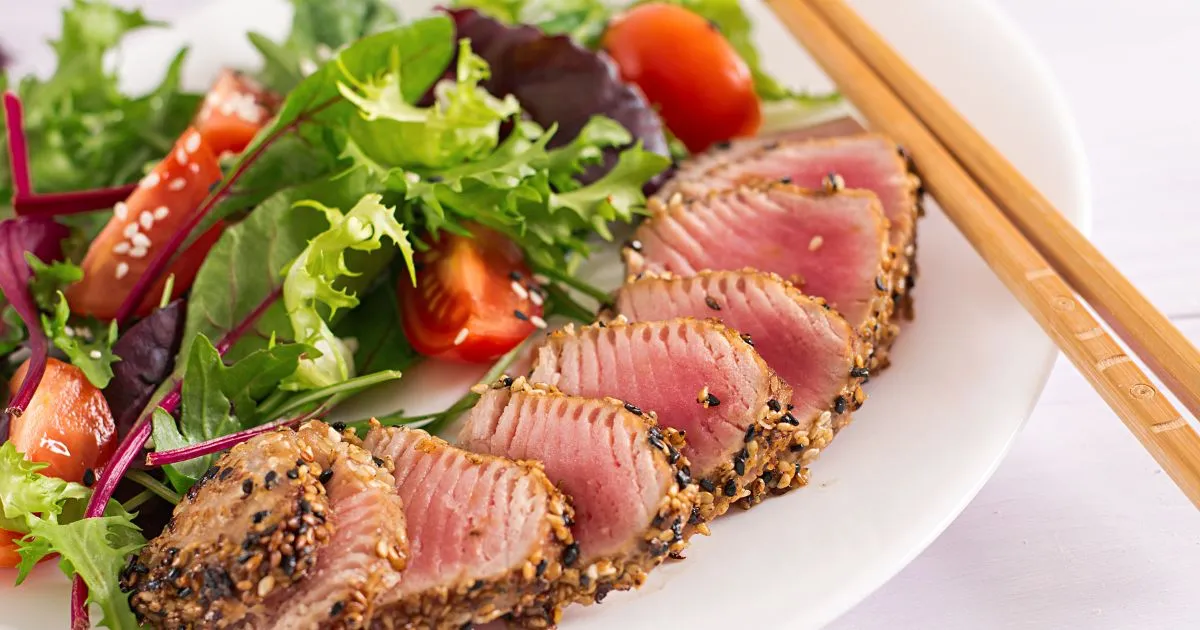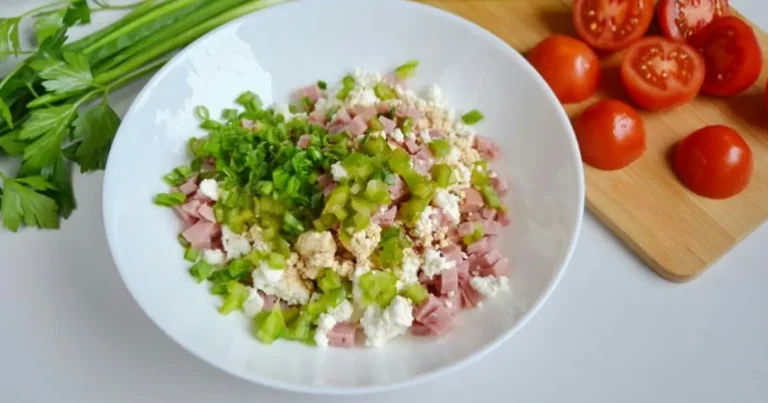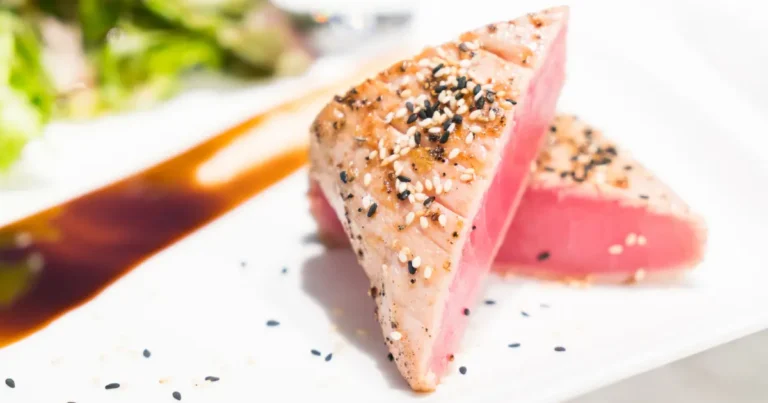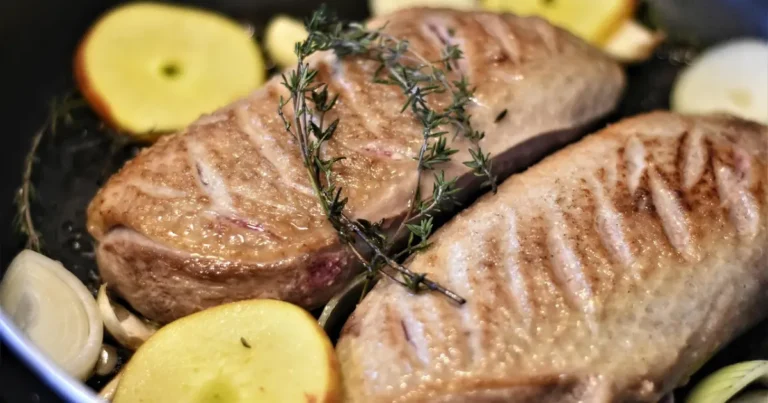What Is Toro Fish? A Guide to Fatty Tuna in Sushi
You’re about to start a journey into the world of toro fish. This delicacy is loved by sushi fans everywhere. It’s prized for its smooth texture and rich, buttery flavor.. Fatty tuna is a key part of top sushi dishes.
In this guide, you’ll learn why toro fish is so special. You’ll see its role in sushi culture and its health benefits. Whether you love sushi or are just starting, knowing about toro fish will make you appreciate it more.
Key Takeaways
- Discover the luxurious world of toro fish and its significance in sushi cuisine.
- Learn about the rich, buttery flavor and melt-in-your-mouth texture of fatty tuna.
- Understand the cultural importance of toro fish in high-end sushi.
- Explore the nutritional profile of this delicacy.
- Enhance your appreciation for toro fish with expert insights.
What Is Toro Fish? The Prized Belly Cut of Bluefin Tuna
Toro fish is a luxury for sushi lovers. Sourced from the fattier sections of bluefin tuna.. Its rich taste and soft texture make it a favorite in the culinary world.
Exploring toro, we learn about its definition, cultural importance, and why it’s a luxury food.
Definition and Cultural Significance
Toro fish is the fatty tuna belly. It’s loved for its rich taste and smooth feel. In Japan, toro is a special treat for important events.
Its rarity and the skill needed to prepare it add to its cultural value. Key points about toro’s cultural importance include:
- Its link to luxury and fine dining
- The traditional ways it’s prepared
- The respect it gets in sushi culture for its taste and texture
Why Toro Is Considered a Luxury Delicacy
Toro is a luxury food for many reasons. Its high fat content comes from bluefin tuna. The rarity and hard work to get top-quality tuna make it even more special.
The craftsmanship required to prepare toro sashimi or sushi enhances its exclusivity. The main reasons toro is seen as a luxury item are:
- The high demand and limited supply of quality bluefin tuna
- The detailed preparation methods that need great skill
- The unique dining experience it offers, with its rich flavor and tender texture
Types of Toro: From Chutoro to Otoro
The world of toro is full of variety, from chutoro to otoro. Each offers a special sushi experience. Toro is prized for its deep flavor and smooth, velvety texture. It’s a prized cut of fatty tuna used in sushi.
The different types of toro meet various tastes and preferences. This makes it a versatile ingredient in sushi cuisine.
Chutoro: The Medium-Fatty Tuna
Chutoro is a type of toro that balances fat and lean meat. It’s considered the medium-fatty tuna. This means it has a richer flavor than leaner cuts but is less fatty than otoro.
Chutoro is loved for its velvety texture. It’s often found in high-end sushi restaurants.
Otoro: The Ultimate Fatty Tuna Experience
Otoro is the fattiest and most luxurious part of toro. It’s known for its exceptionally rich flavor and silky texture. It’s a delicacy, often served as nigiri or sashimi.
Otoro melts in your mouth, offering an unmatched sushi experience. It’s both rich and subtle.
Other Toro Variations and Cuts
Beyond chutoro and otoro, toro comes in other distinct cuts and variations.. Each has its own unique characteristics. Some sushi restaurants use different classifications or regional names for toro cuts.
This diversity adds to the toro experience. Understanding these variations can deepen your appreciation of sushi fatty tuna and sushi preparation.
The Bluefin Connection: Source of Premium Toro
Looking for the best toro? You’ll find it in the majestic bluefin tuna. But what makes bluefin tuna so unique? It’s all about its anatomy and the amazing flavor it brings.
Anatomy of the Bluefin Tuna
Bluefin tuna is huge and has a special body. It has a lot of fat, especially around the belly. This is where toro comes from.
The fatty layers mix with muscle tissue, creating a marbled effect. This enhances both the flavor and texture even further. This marbling is what makes premium toro so special in sushi.
- High fat content for rich flavor
- Marbled texture for tender mouthfeel
- Large size allowing for various cuts
Why Bluefin Produces the Best Fatty Tuna
So, why is bluefin tuna the best for fatty tuna? It’s because of its diet and body. Bluefin tuna eats a wide variety of food, which adds to its flavor. It also grows slowly and gets bigger, which means it has more fat.
This mix of diet and growth results in a luxurious toro that’s both tender and full of flavor.
Want to try bluefin toro yourself? Look for it at a good sushi place. You’ll see the marbling and taste the rich, buttery flavor of bluefin toro.
Toro vs. Maguro: Understanding Tuna Terminology
Exploring sushi means knowing the difference between toro and maguro. These terms are common in sushi places. They describe different parts and qualities of tuna.
What Is Maguro and How It Differs
Maguro refers to the leaner tuna parts. In contrast, toro comes from the fattier portion of the tuna. Toro is known for its rich taste and soft texture. Maguro, on the other hand, has leaner meat and a firmer texture.
The difference goes beyond fat content. It also shows different tastes and cultural likes.
Regional Names and Classifications
Tuna names change a lot by region and culture. In Japan, maguro usually means bluefin tuna. Elsewhere, the term might be used to describe less fatty cuts. Knowing these differences helps you enjoy sushi more and pick the right dishes.
| Term | Description | Characteristics |
| Toro | Fattier portion of tuna | Rich flavor, tender texture |
| Maguro | Leaner parts of tuna | Leaner meat, firmer texture |
How to Identify Quality Toro Fish at Restaurants
With sushi becoming more popular, it’s key to know how to spot quality toro fish. At a sushi place, there are a few things to look for to get the best toro.
Visual Indicators of Premium Toro
Top-notch toro fish has a rich, marbled look. The marbling should be uniform, with a balanced mix of fat and meat. A bright color means it’s fresh.
Key Visual Characteristics:
- Rich marbling
- Vibrant color
- Even distribution of fat
Texture, Taste, and Mouthfeel
Premium toro should feel smooth and silky, melting in your mouth. The taste is indulgently buttery with a delicate sweet note. The fat should melt fast, covering your tongue.
Price Points and What They Indicate
Toro sushi prices can change a lot based on quality. Higher prices usually mean better toro, from trusted sources. Watch out for very cheap toro, as it might be lower quality or frozen.
| Quality Indicator | High Quality | Lower Quality |
| Marbling | Evenly distributed, rich | Less marbling, uneven |
| Color | Vibrant, fresh appearance | Dull, possibly frozen |
| Texture | Smooth, silky | Coarse, chewy |
| Price | Higher, reflecting quality | Lower, potentially lower quality |
The Art of Enjoying Toro Sushi
Enjoying toro sushi is a feast for your senses. It’s a mix of taste, texture, and how it looks. When you try high-quality toro, it’s more than just a meal. It’s a work of art.
Traditional Serving Methods
Toro sushi is served in a simple yet elegant way. It’s typically served plain or with a subtle garnish. This lets the fish’s rich flavor and tender texture stand out.
This approach respects the fish’s quality. It lets you fully enjoy its umami taste.
Modern Toro Presentations
Modern sushi chefs have added creative touches to toro sushi. You might see it with unique sauces, garnishes, or cooked ingredients. These new ways make the dish exciting for everyone.
Pairing Recommendations
To make your toro sushi better, try pairing it with certain flavors. Wasabi and soy sauce are classic choices. They enhance the fish’s taste without overpowering it.
For something different, try sake or dry white wine. It’s meant to complement and balance the toro’s richness.
| Aspect | Traditional | Modern |
| Presentation | Simple, minimalist | Creative, with garnishes and sauces |
| Flavor Profile | Focus on natural toro flavor | Enhanced with additional ingredients |
| Pairing | Wasabi, soy sauce | Sake, white wine, unique sauces |
Exploring toro sushi is about finding the right balance. Whether you like traditional or modern styles, the key is to enjoy its rich flavors and textures.
Nutritional Profile and Health Considerations
Enjoying toro sushi is more than just a treat. It’s about knowing its nutritional value and environmental impact. Toro, a fatty tuna, has both health benefits and concerns.
Fat Content and Omega-3 Benefits
Toro is known for its high fat content, packed with omega-3 fatty acids. These fats are good for the heart, reducing inflammation and triglycerides. The American Heart Association says omega-3s can lower heart disease risk.
“According to a study in the Journal of Nutrition, the health benefits of omega-3s are well-established—they support heart health and may enhance brain function.”
Sustainability Concerns and Ethical Consumption
Despite its health perks, bluefin tuna’s sustainability is a big worry. Its populations have suffered due to overfishing and habitat destruction. Choosing toro from sustainable sources helps.
Look for MSC (Marine Stewardship Council) certifications when buying toro. This ensures your choice supports conservation. As Dr. Jane Smith, a marine biologist, emphasizes, “Sustainable seafood choices are crucial for maintaining healthy ocean ecosystems.”
Conclusion: Appreciating the Luxury of Toro
Exploring toro fish shows why it’s a luxury in sushi. What sets it apart is its rich flavor and smooth, silky texture. Sushi lovers prize it highly.
Knowing about chutoro and otoro, and how to spot quality toro, improves your sushi experience. It shows the skill in making toro sushi and its cultural value.
Understanding what makes toro a luxury can deepen your appreciation. Whether you’re a sushi beginner or a longtime enthusiast, understanding toro adds to the experience.
FAQ
What is toro fish?
Toro fish is the fatty part of tuna, especially the belly. Famous for its buttery flavor and tender texture.
What is the difference between toro and maguro?
Toro is the fatty tuna parts, while maguro is leaner. Toro offers a deep, rich flavor and a tender texture. Maguro is leaner and often used in sushi and sashimi.
What is bluefin otoro?
Bluefin otoro is the fattiest tuna part. It’s a luxury due to its rich flavor and silky texture. It comes from the bluefin tuna’s belly.
What is chutoro?
Chutoro is a mix of fat and lean tuna. It’s fattier than maguro but less than otoro. It offers a unique taste and texture.
Why is toro considered a luxury delicacy?
Toro is considered a luxury for its high fat content, rich flavor, and tender texture. The rarity and difficulty in getting high-quality bluefin tuna make it even more special.
How do I identify quality toro fish at restaurants?
Look for a rich, marbled appearance in quality toro. It should be soft in texture with a rich, buttery flavor. Remember, high-quality toro is usually pricier.
What are the nutritional benefits of toro?
Toro is full of omega-3 fatty acids, which are good for your heart and reduce inflammation. But, it’s also high in fat, so eat it in moderation.
Are there sustainability concerns related to tuna fishing for toro?
Yes, tuna fishing, especially for bluefin, raises sustainability concerns. Overfishing and habitat damage are big issues. It’s important to choose sustainable and ethical options.






